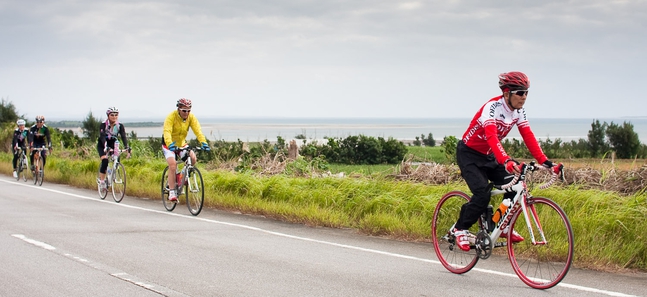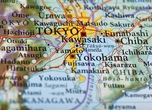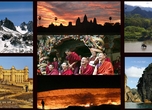Ishigakijima Earth Ride
100 kilometres of cycling in Okinawa – and no traffic lights

Posted: Mon Feb 27 2012
At around the 30 kilometre mark, I start to understand the appeal of padded shorts. We’re still in the early stages of the 2011 Ishigakijima Earth Ride, an all-day cycle expedition in which riders traverse one of the southernmost islands in Okinawa. On paper, it sounds fantastic: a 100 kilometre jaunt (125, if you’re feeling keen) through luscious countryside, with not a single traffic light to interrupt the fun. But, having set off in the same loose-fitting shorts that I wear during my 40-minute commute in Tokyo, any enjoyment of the surroundings is at risk of being trumped by the escalating soreness in my rump.
The day of the ride starts early: at 6.30am on a cloudy late-November morning, the car park down the road from the Royal Marine Palace hotel is already filling up with brightly attired cyclists, ranging from children to a smattering of septuagenarians who'll go on to outshine many of the younger riders. While some of the participants are locals, most arrived on the island a day or two earlier, either bringing their bicycles in carry cases on their flights or having them shipped directly in large freight containers as part of a package offered by tour operator JALPAK. As they wait for the 7am start whistle, they fiddle with pumps, adjust clothing and do stretches, most repeating the routines taught the previous afternoon in a session with event organiser Taro Shirato.
A lean, handsome and disarmingly confident professional triathlete – looking far younger than his 45 years – Shirato held the first Earth Ride in Ishigakijima in 2008, inspired by Hawaii’s 100-mile Century Ride. He’s since introduced similar events in Hokkaido, Miyazaki, Tokyo, Kyoto and New Zealand, but seems to retain a special affection for this Okinawan island, with its verdant nature, leisurely pace of life and generous quantities of awamori liquor. Shirato will be at the head of the pack for the entire ride, arriving at the goal a few hours before many of the rest of us do, but as we prepare to set off he reiterates that this isn’t a race. The mantra is simple: enjoy yourself.
Judging from the way some of my fellow riders are attired, ‘taking it easy’ might not be an option for everyone here. But while a sizable contingent look like they’re about to compete in the Tour de France, others are less Lance Armstrong-esque in their athleticism. The Earth Ride course, running up the west coast of Ishigakijima, manages to accommodate both extremes: there’s the option of turning back after 20, 30 or 50 kilometres – or else continuing all the way to Hirakubozaki lighthouse, on a peninsula at the northern tip of the island, for a round trip of 125km.
After a spectacular, lightning-flecked storm the previous night, the weather is still looking a little dicey when we set out. Dull grey skies threaten – though never deliver – another downpour, and the headwind on the outward leg is so strong that I occasionally find myself having to pedal in a low gear even when going downhill. That said, the temperature is surprisingly balmy for this time of year, and any anoraks and long-sleeved tops are quickly stashed away.
Our first stop is after 15 kilometres, and immediately it becomes clear what Shirato was talking about a day earlier, when he joked that most riders probably finish the event heavier than when they started. At each of the rest points, we’re treated to a plenteous array of local produce: bananas, star fruit, shikuwasa juice, sata andagi doughnuts (freshly cooked!), onigiri rice balls, brown sugar cubes. It’s a welcome change from the energy bars and isotope drinks that you’d normally expect at this kind of event – they even serve beef stew at one point – though the calorie hit is just as effective.
Photo gallery: Ishigakijima Earth Ride
While the first leg of the ride is slow going, the riders become more spread out as we progress, making it easier to travel at your own pace. Shirato has recommended conserving energy on the outward journey by riding in a lower gear than we usually would, lest we run out of juice a dozen kilometres from the finish line. It’s sage advice, but I’ve also got an unfair advantage over many of the others: my ride for the day is an S-Works Tarmac SL3 Dura-Ace on loan from Specialized, an absurdly high-end road bike that weighs in at under 16lb and handles like a Ferrari with pedals. It’s got an electric gear shift, too, and the temptation to shout ‘Later, suckers!’ as I glide past cyclists on the uphill stretches is considerable (they’ve got padded posteriors: they can take the abuse).
Anyone wanting to continue as far as the Hirakubozaki lighthouse needs to clear the northernmost checkpoint by 11am, and I arrive about half an hour before that, as riders hurtle past me in the opposite direction, already well into the return leg. We’ve been warned that this additional section of the course is the hilliest, culminating in a punishing ascent towards the cape, but it also boasts the most attractive scenery of the whole ride, prompting people to stop by the roadside for quick photo ops. The cameras come out again when we arrive at the lighthouse, taking in the view alongside tourists who’ve come in rental cars, the lazy sods.
If there were moments in the outward journey where my resolve began to ebb, that’s all forgotten as soon as I head back. The wind is behind us now, and Shirato’s advice has paid off: aching bum aside, I’ve still got plenty of energy in reserve, and find myself pepped by the knowledge that there's less than halfway left to go. I end up riding alongside a couple of cycling journalists and a petite government worker from Kumamoto who manages to keep pace with us the whole way, and we cross the finish line together at 3.30pm, over eight hours after we departed.
Heading back to my hotel room for a shower and change of clothes, I return to find the after party in full swing. Never mind that they’ve been grazing on food all day: the riders make short work of the onigiri, Okinawa soba and Orion beer on offer, though it takes a little longer to finish the enormous keg of awamori. After a few speeches, a raffle and performance by local singer Kaori Nakada, the evening culminates with an exuberant display of Okinawan dance and drumming, complete with stage invasion. And, twelve hours after the ride started, we’re done.
The following day, those Earth Riders who haven't hopped on the first plane back home can take their pick between two additional tours: a trip to see the turtles on nearby Kuroshima, or a leisurely ride on Iriomote-jima, an island with enough untramelled jungle to rival the more famous Yakushima. I choose the latter option, which includes a boat trip through the island’s mango groves and a ride in a cart drawn by a water buffalo – a quintessential Okinawan tourist experience that’s not entirely improved our guide’s tone-deaf rendition of local staple ‘Nada So So’.
Travel tips
When to go
The Ishigakijima Earth Ride 2012 will take place on November 18. If you can’t wait that long, check the Earth Ride website for details of the Hokkaido Furano ride on June 24.
Where to stay
The Earth Ride starts and finishes at the Royal Marine Palace hotel, a short ride from the centre of Ishigaki City. Spacious, kitchen-equipped suites start at ¥5,800 per person (including breakfast).
What to eat
Seafood, unsurprisingly, is a major draw in Ishigakijima, and Marusa (503-1 Ishigaki, Ishigaki-shi; @izakaya_marusa) is one of the best. Try the local speciality of maasu-ni, fish boiled with with salt and awamori, together with some prawn karaage and sashimi – washed down with awamori or the locally brewed Ishigakijima beer.
How to get there
JALPAK offers inclusive tours to Ishigakijima for the Earth Ride, covering flights, accommodation and shipping of bicycles. Check the Earth Ride website for details closer to the date. If you’d prefer to travel independently, ANA and JAL subsidiary Japan Transocean Air both have multiple flights each day from Haneda to Ishigakijima, via Naha.
Tags:
Tweets
- About Us |
- Work for Time Out |
- Send us info |
- Advertising |
- Mobile edition |
- Terms & Conditions |
- Privacy policy |
- Contact Us
Copyright © 2014 Time Out Tokyo































Add your comment